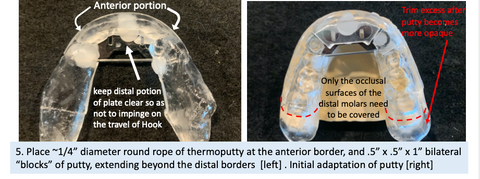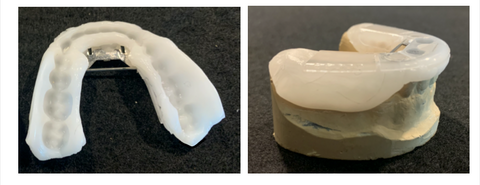Security Bar
One of the features of an apnea device that is approved for Medicare code E0486 is that the device must "remain fixed in place during sleep so as to prevent dislodging the device".
The SnoreHook Splint complies with this criteria by providing for the application of the Security Bar. (download higher rez pdf here)





